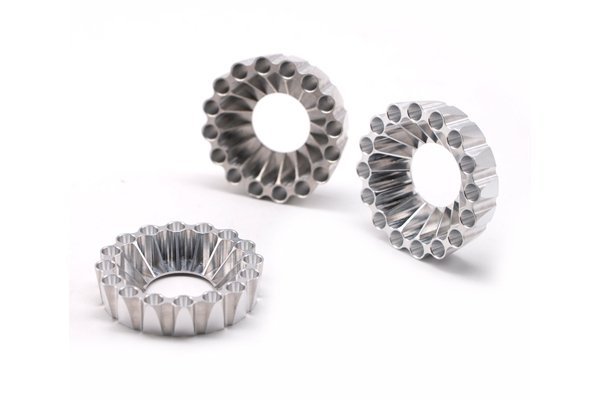Did you know that surface adhesion plays a crucial role in the performance and longevity of machined parts? Studies have shown that adhesive bonding is a critical factor in over 60% of manufacturing failures attributed to poor surface preparation and treatment. This reality becomes especially evident when discussing components produced through CNC (Computer Numerical Control) machining. Often, the integrity of these parts is directly linked to how effectively coatings, paints, or adhesives adhere to them. This is where the hundred-grid adhesion test comes into play.
Understanding CNC Processing and Its Importance
Before diving into the intricacies of the hundred-grid adhesion test, let’s briefly understand what CNC processing is. CNC machining has revolutionized manufacturing by allowing for the precise control of tools and machinery through computer programming. It enables manufacturers to produce complex shapes with tight tolerances, making it a staple in industries ranging from automotive to aerospace.
However, the real success of a CNC machined part often hinges on the quality of its surface treatment and how it interacts with subsequent processes such as coating, painting, or adhesive bonding. Consequently, ensuring that the surfaces of these machined parts are adequately prepared for additional treatments is paramount to achieving desired performance outcomes.
What is the Hundred-Grid Adhesion Test?
The hundred-grid adhesion test is a standard method to assess the adhesive quality and bonding strength of coatings on a substrate—typically metal surfaces after they have undergone CNC machining. This test helps determine how well a coating adheres to a substrate under various stress factors, thus predicting longevity and performance in real-world applications.
The Process of Conducting the Hundred-Grid Adhesion Test
The test involves several key steps that provide consistent and reliable results. Here’s how it’s typically executed:
Why is the Hundred-Grid Adhesion Test Important?
The hundred-grid adhesion test is critical for several reasons:
Factors that Influence Adhesion in CNC Processed Parts
Surface Preparation
One of the primary factors affecting adhesion is surface preparation. Surface contaminants, such as oils from machining fluids or dust, can create a barrier that prevents effective bonding. Techniques such as abrasive blasting, chemical cleaning, and mechanical scrubbing can help ensure the substrate is properly prepped for coatings or adhesives.
Surface Roughness
The texture of the surface also plays a vital role in adhesion. A rougher surface increases the mechanical interlocking between the coating and the substrate, resulting in stronger adhesion. CNC machining parameters (i.e., speeds, feeds, and tool types) can be adjusted to optimize surface roughness accordingly.
Coating Characteristics
The properties of the coating itself, including viscosity, curing time, and application method, can also significantly impact adhesion. Selecting the right coatings that are compatible with the substrate material is crucial for achieving optimal adhesion.
Environmental Factors
Humidity and temperature can also affect the adhesive process. Cool, dry conditions are generally ideal for achieving strong bonds, while high humidity can lead to surface moisture interfering with various coatings.
Common Issues with Adhesion in CNC Processes
Despite proper testing and preparation, manufacturers may still face bonding failures. Here are some common issues:

Analyzing the Results: Interpretation of Adhesion Scores
In the hundred-grid adhesion test, results are categorized typically as follows:
By closely analyzing these scores, professionals can determine how to adjust their process to improve adhesion outcomes.
Case Studies: Real-World Applications of the Hundred-Grid Adhesion Test
Case Study 1: Aerospace Industry Application
In aerospace manufacturing, surface coatings are critical for protecting components from corrosion and wear. One manufacturer implemented the hundred-grid adhesion test to assess adhesion on aircraft fittings that were critical to safety. By identifying poor adhesion through testing, they switched to a more compatible coating and made necessary changes to their surface preparation methods. This ultimately enhanced the durability and safety of the components.
Case Study 2: Automotive Sector
An automotive supplier faced high rejection rates due to paint delamination. After integrating the hundred-grid adhesion test into their quality assurance processes, they discovered contaminants on the component surfaces that had been overlooked. Implementing improved cleaning protocols led to a significant reduction in rejections, improved customer satisfaction, and saved both time and money.
Techniques and Best Practices for Maximizing Adhesion
To maximize adhesion in CNC machined parts, consider incorporating the following best practices into your processes:
In the highly competitive landscape of manufacturing, particularly in sectors where precision and reliability are non-negotiable, conducting thorough tests like the hundred-grid adhesion test after CNC processing is crucial. This test not only ensures quality and provides valuable insights into surface performance but also serves as a reliable indicator of long-term success for coated parts.
By implementing the strategies discussed and remaining vigilant about adhesion standards, manufacturers can significantly reduce the risks associated with poor bonding and enhance their overall production processes. The importance of adherence to quality standards cannot be underestimated and serves as a foundational aspect of producing durable, reliable components.
Recognizing the vital role of adhesion in CNC processing should prompt earnest consideration and action within all manufacturing environments. It safeguards not only the final products but also the integrity of the entire production line—ensuring that quality, performance, and safety standards are consistently met. Embrace the hundred-grid adhesion test and elevate your manufacturing quality today!
—






